Measurement of skin conductance in acupuncture
21. Október, 2011, Autor článku: Fico Tomáš, Elektrotechnika, Študentské práce
Ročník 4, číslo 10  Pridať príspevok
Pridať príspevok
 In this article is showed introduction to measurement of skin conductance and problems which appears with this type of diagnostic. There is also introduced theoretical conception of the measuring system, which is already physically implemented in form of diagnostic device. This article presents the basic features of the device and analytical software for PC. Designed diagnostic device is an object of diploma project, which is aimed to create alternative diagnostic equipment for acupuncture usage.
In this article is showed introduction to measurement of skin conductance and problems which appears with this type of diagnostic. There is also introduced theoretical conception of the measuring system, which is already physically implemented in form of diagnostic device. This article presents the basic features of the device and analytical software for PC. Designed diagnostic device is an object of diploma project, which is aimed to create alternative diagnostic equipment for acupuncture usage.
1. Introduction
Acupuncture is a therapy method and it belongs to the traditional Chinese medicine, which contains also other methods like the massages, curing with herbs, etc. Word “acupuncture” consist from two Latin words: “acus” (needle) and “pungere” (to prick), which suggest the therapy principle. Acupuncture describes every organism as system, but not as system built only with muscles, nerves, organs etc., but also as system of points, paths, energies and information [1].
Human body consists of about 1000 acupuncture points (APs) and each of it is associated with the meridians – energy paths. Meridians are connected between each other and with some body organs. With stimulation of the proper AP it is possible to influence every action in organism. It is reached with influence on the energo-information (energy flow, meridians, micro-systems), psycho-regulating (emotionalism, awareness) and bio-morphological level (organ systems, blood circulation) [2].
Acupuncture point can be defined from the physical and the morphological view as place on the body, where skin is thinner and there are also more nervous plexuses (the sensory receptors) than in surrounding skin. Size of the APs depend on the location on the body and can be from 2mm to 10mm large. The APs are characterized by higher temperatures, higher sensitivity on pressure and other influences. APs differ from surrounding skin in electrical characteristics like lower electrical resistance, higher electrical potential, higher electrical capacitance and APs are also source of low electrical current [4].
Methods and devices based on detecting changes of these electrical characteristics are EDST (electrodermal screening test) and EDSD (electrodermal screening devices). In the 20th century were developed two independent methods based on the measuring skin conductance. Professor Dr. Yoshio Nakatani from Japan developed first method and named it Ryodoraku, it consists of words: “ryo” (good), “do” (conductance) and “raku” (path or line) [5]. Second method was developed in Germany by Dr. Reinhold Voll. It is called EAV (Electroacupuncture According to Voll) [6]. The main differences between these methods are in types and locations of the measured AP.
2. The EAV method
The EAV method is based on measuring electrical skin resistance in APs using the Ohm’s law (1) or his inverted form (2).
| (1) |
| (2) |
Simplified schematic of device is on Fig. 1.
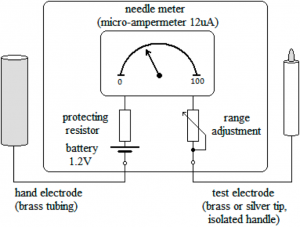
Fig. 1. Schematic of the EAV device with electrodes [6].
In Fig. 1 we can see EAV device using low direct voltage about 1.2V. On the other hand Ryodoraku devices have higher measuring voltage, in some cases up to the 21V. Therefore EAV method is more precise, because at this low measuring voltage physiology changes (ionization) does not occur and through body flows safe direct current about 12 micro-amperes [6]. Analog measuring mechanism is like an ammeter with linear scale, but in non-dimensional units from 0 to 100. When unknown resistance (the human body) is connected between electrodes, it causes deviation of needle and measured value is shown.
Optimal values are between 50 and 56. Lower values indicate some weakening or degeneration. Vice-versa, values above normal indicate increased activity or inflammation in the body [3]. Measurements are performed with the patient holding the hand electrode in closed hand and therapist with the test electrode measuring electrical conductivity at individual points. Set of diagnosing points depends on diagnostic method and measured values are displayed in charts and evaluated. After the evaluation, the therapist chooses which APs will be used for the best result in the therapy.
3. Electrical characteristics of the AP
As was previously mentioned, the acupuncture points differ from the skin (where APs do not appear) in electrical properties. In the Fig. 2, we can see equivalent model schematic of normal skin and the AP [7].
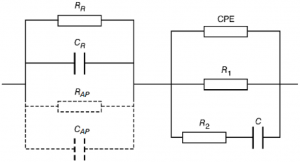
Fig. 2. Electrical model of normal skin and the AP [7].
As we can see, there are many elements. Component RR is resistivity and CR is capacity of human body. Element CPE (Constant Phase Element) is a component, which makes shift phase of the signal. Its value depends for example on roughness of the skin’s surface. Resistor R1 represents resistivity of the skin – epidermis itself. Elements R2 and C describe the intracellular compartments of the skin. Components which make difference between the AP and normal skin are RAP and CAP. These elements were added after determination, that in AP is lower resistivity and higher capacity at DC (direct current), but also AC (alternating current) in range of the different frequencies. Real interpretation of this fact is based on a morphological research.
The research showed, that in the area of the APs, under stratum corneum (outermost layer of the epidermis) is a larger concentration of the nervous plexuses, the microcirculation vessels and the mast cells (contain histamine and heparin, play important role in protection of the organism) than in the surrounding skin. Investigation had also shown, that under the influence of an electrical signal on one of the AP, the electrical resistance of other points, connected to the same internal organ, changes as well. There is a suggestion, that the APs are associated with some elements of the anatomic nervous system, which transmits electric signals well.
Estimation of the ideal value of resistivity in the AP measured on healthy person is not a simple task, because it depends on many factors. Resistivity in the APs is influenced by state and humidity of the skin, but also ethnic origin, where darker skin has higher resistance, because the stratum corneum is denser and has more cell layers [8]. Resistivity also depends on day hour, when measuring is done, it’s influenced by a biorhythm. Normal value measured with EAV device, that is DC, is in range from 53kΩ to 95kΩ and capacity CAP about 50nF [8], [7].
In the designed solution was used direct voltage, following the model of original methods. In this case capacitive elements do not influence the measured value and only real part of model will be measured. In order to sum up properties of the APs, it is needed to tell also something about change of resistivity in relation with time, when measuring voltage affects the APs. Fig. 3 shows typical waveforms of current and in some way conductivity in the AP.
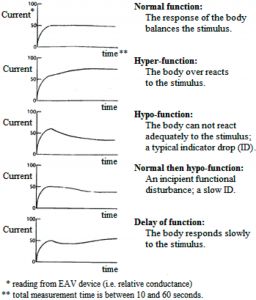
Fig. 3. Five examples of typical waveforms taken with the EAV device [9].
Based on these curves, disorders on the individual paths and type of disorder can be diagnosed in the EAV. Information about the change of value during the measuring is not used in the designed solution. Methodology from Ryodoraku is partly used, in case when value is taken two or three seconds after the test electrode was applied on the AP. New device does not take only one value, but series of values in limited period of time. As a result, an average of these values is taken.
4. Characteristics and design of the electrodes
Electrodes are used for carrying signal (energy) from patient to the device and vice-versa. Electrodes should be designed in a way, so that the measurement is not influenced with it and the patient would not be hurt. The main function of the electrode is to change from one type of conductivity, namely first class conductor where electrons carry electric charge, to conductor of second class, where the carriers are ions and vice-versa. This conversion is done on the boundary electrode – electrolyte and it is happening by passing the ions.
We can distinguish between two types of reactions: the oxidation (release of the n electrons) and the reduction (receive of m electrons). These reactions are reversible. In the Table 1. is shown oxidation of the zinc and reduction of the copper. There is also listed redox potential measured against the reference hydrogen electrode.
Table 1. Table of reactions [10]
| Chemical reaction | E0 [V] |
| Zn (s) → Zn2+ + 2.e- | -0.768 |
| 2H+ + 2.e- ↔ H2 | 0 |
| Cu2+ + 2.e- → Cu (s) | 0.344 |
The resultant potential is calculated as difference between potential of the electrode and the potential of electrolyte, namely the half cell potential.
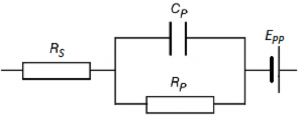
Fig. 4. Model of the boundary electrode-electrolyte.
In Fig. 4 we can see the half cell potential EPP used in the electric model. Resistor RP represents resistivity and CP capacity of the boundary, which is based on charge-bilayer of the ions [11]. Resistor RS means electric resistivity of the electrolyte itself. In case of using DC (our case) or AC with low frequency we can express impedance as sum of the electrolyte resistance RS and the boundary RP.
During designing electrodes it is important to take care on choosing same materials for hand and test electrode, because different metals have different half cell potential and the sum of it could make high voltage drift. In case of using electrodes made from a stainless steel and gold, this drift could reach value about hundreds of millivolts (>500mV), in contrast of two Ag/AgCl electrodes, where drift is about 100mV [12].
In the ECG, EEG or EMG are mainly used Ag/AgCl electrodes. They are designed in the way that on the metal base (silver or its alloys) is deposited layer of the sparingly soluble salt, namely silver chloride AgCl. On contact surface is deposited electrolyte, conductive gel containing salts. Ag/AgCl has good qualities, as stable half cell potential, low noise and low contact resistance for entire measuring [13].
These electrodes are not suitable for measuring skin conductance with above mentioned methods (EAV, Ryodoraku); because we need special conductive gel, which is single-use only and layer of the AgCl can be easily worn out. For these reasons, a brass was chosen as construction material. The brass is metal alloy made from the copper and the zinc. This material has several advantages:
- good conductivity (better then stainless steel).
- changes carriers from one class to another well.
- corrosion resistance (oxidizes less than Cu, therefore does not change properties radically).
- is non-allergic (e.g. allergic to nickel is from 6 to 10% of people).
- low price and does not wear out as gold-plated or silver-plated layer.
The brass has also another advantage; it’s non-magnetic, because APs can be affected by magnetism. Electrolyte on the hand electrode will be perspiration from skin or additional moisten of epidermis with biological fluid containing salt (with electrical properties like tissues). While designing a test electrode was used conventions from both EDSDs. The EAV devices use as the test electrode tip from the metal (ϕ3mm), where measuring area is moisten with the biological fluid. Ryodoraku is different and uses a hollow electrode, in hole is placed cotton moisten with the biological fluid. Real design of the electrode is shown in the Fig. 5.
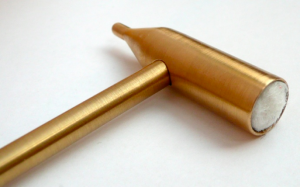
Fig. 5. Design of the double-sided test electrode.
The biological fluid is not used only as electrolyte, but also to smooth different humidity of the different parts of the human body and also makes important conductive connection. Test tip is useful mainly at measuring the AP with small size and in high density area of the APs, e.g. on the ear (about 40 points). Resistivity of the moisten cotton is between 4kΩ and 6kΩ, it depends on humidity and size of the “cotton ball”. The test tip has a little higher resistivity from 5kΩ to 7kΩ, which is caused by smaller contact area of the electrode, but there is thinner electrolyte layer (saline fluid).
Among the significant factors, which influence the measuring, belongs oxidation of the brass. Therefore, electrodes should be cleaned, so that surface of the brass will not change electrical properties. It is necessary to keep approximately the same humidity of the epidermis as well as applied pressure at the AP.
5. Description of the measured object
Above was mentioned that measuring will be done with DC, therefore we can omit all capacities and inductances. In the Fig. 6 is shown simplified measured object.
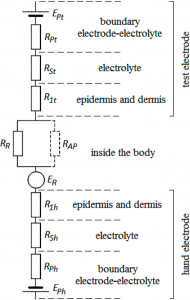
Fig. 6. The electrical model of the measured object.
As we can see, the model is divided into three parts: the test electrode, inside the body and the hand electrode. The electrodes have not identical parameters, because they are physically different and there is also difference in the properties of the hand and the other places of the body. In order to simplify, we will consider that the voltage sources EPh , EPt contain several potentials as potential of electrode, electrolyte and potential of the boundary electrolyte-epidermis.
In Fig. 6 potentials have opposite polarity and therefore subtract each other, but they have not the same value. This causes that voltage drift is nonzero and can be up to 150mV. Measuring shows, that the hand electrode (during holding) has more positive potential against the test electrode (pressed at the AP). This result is valid for all measured APs and is caused by the difference in shapes of electrodes and their placements.
Potential ER represents changeable voltage source, which is a sum of the AC voltages with various frequencies and waveforms. There are potentials produced by active tissues (e.g. ECG signal), movement articles (potential produced by muscles) and other potentials produced by internal processes or from environment. Measured value is the resistance, which has static character or is changing very slowly. Resultant value is essentially sum of the each single resistance.
6. Design of the measuring system
Requirements for the measuring system come out from the safety aspect, because electrodes are directly connected to the measured object – the human body. Therefore designed device is powered by accumulators and during normal usage is risk of an electric shock eliminated. There are also requirements on accuracy, resolution and repeatability. Measuring voltage was established as DC and its upper limit was specified to be 1.4V. Current which flows through patient at this voltage is lower than 1μA. It is significantly lower value than sensibility threshold of the skin (about 2mA). This voltage is low enough, so it cannot significantly influence the measure (risk of polarization).
Problem, which brings us measuring with DC, is that partial potentials affect the measuring voltage and therefore measurement is depreciated. The solution is to measure this drift voltage and then correct the result. Another solution is in the usage of two different measuring voltages. In designed solution are used two precise operational amplifiers (Op-Amp). The first one is connected as an inverting amplifier (Fig. 7).
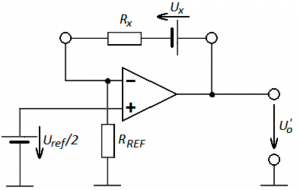
Fig. 7. The principal schematic with the Op-Amp.
It is obvious from the schematic, that the measuring object is connected as feedback of the inverting amplifier. Voltage UX means an error, which is transferred to the result of measurement. Output voltage is computed as:
| (3) |
A closer look shows that the output voltage will vary linearly with changes in a resistance and will have voltage drift UX (UX reaches only positive values). It is also clear, that output voltage will be in range UREF/2 and UREF , assuming that RX ≤ RREF. This range is not very useful, therefore it is used another Op-Amp as differential amplifier and its output voltage is calculated by the formula (4).
| (4) |
Value of the resistor R2 is a double to value of the resistor R1, so the gain of differential amplifier will be 2. According to formula (4) output voltage, which is connected to input of ADC (Analog-to-Digital Converter), will be between 0V and UREF and a whole voltage range is used. Substituting the formula (3) to the formula (4) we get:
| (5) |
If we use two reference voltages, we will get two equations (analogy of the formula (5), only with indexes 1 and 2), where unknown values RX and UX are equivalent. From second equation we get voltage UX and then we will have formula (6).
| (6) |
Substituting the formula (6) to first equation and by simplified it, we get:
| (7) |
The unknown voltage Ux is exempted from the formula which now contains two reference voltages, which we need to know. If we suppose using ADC with resolution N bits and with reference voltages UREF1 and UREF2. Then
| (8) |
| (9) |
where X1 and X2 are results from an analog to digital conversion. Establish a presumption, that
| (10) |
then we substitute formulas (8), (9) and (10) to the equation (7) and then after simplification we get:
| (11) |
Reference resistor RREF could be calibrated, so that it will be the multiple of resolution N, with this step we get another simplification. This is advantage which makes use of a microcontroller easier. In the resulting equation (11) are values only from two measurements, but it is necessary to provide switching between two levels of the reference voltage. Measurement has also limitation, which is specified by possible measured values. Minimal value is 25kΩ and maximal value is 8MΩ, with step 10kΩ. The low pass RC (Resistor-Capacitor) filters cancels unwanted signals and noises and it is used before ADC and in the measuring circuitry.
There are used shielded measuring cables for the reduction of the EMI (Electromagnetic Interference) to the measuring circuitry. PCB (Printed Circuit Board) has made routing with best effects on reducing influence to measured signal. As we mentioned above, device does not measure only one sample, but series of samples and after digital filtration is calculated arithmetic mean and therefore random errors are reduced and the measurement is more precise.
As we can see, all calculation head to result in an ohms, because it is easier and more accurate to count with ohms in microcontroller, than with fractions in the siemens. Therapist could select in PC program in which units he wants to work, but the default unit chosen is a siemens. Relations of these units follow from the formulas (1) and (2).
| (12) |
7. Hardware realization of the device
Designed device includes also whole range of subsystems, which are necessary for the basic use. The device is based on microcontroller ATmega16L, which collects data – values from each input (analog or digital) and on the outputs manages other circuits. To the microcontroller are connected: measuring subsystem, LCD display, keyboard, sound output, external EEPROM memory, USB to serial interface and power management circuits. All circuits are designed to get low consumption, therefore there are used low supply voltage 3.3V, low drop voltage regulators, low-power integrated circuits and software switching off of the unnecessary circuits. Electronics are made by the surface mount technology (SMT) and SMD components are installed on single sided PCB, Fig. 8.
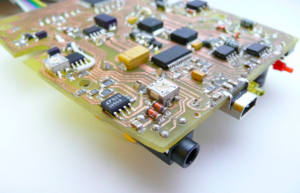
Fig. 8. View of the PCB from the bottom side.
The PCB is mounted in to enclosure, which inner size was pattern for manufacturing PCB. The aim during development was to create the most compact design, Fig. 9.
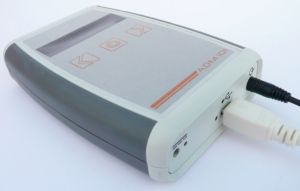
Fig. 9. View of a device enclosure.
8. Software for analyzing of measurements
For processing and analyzing data was developed a PC program, Fig. 10.
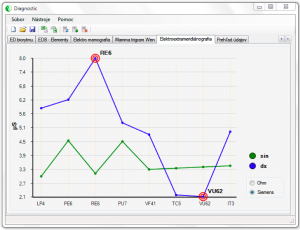
Fig. 10. The diagnostic program in run.
Data from the device are transmitted via USB port and the PC program manages this communication. The application contains five types of measuring programs and five different data representations (line chart, bar chart, pie chart and two types of elements charts). It is possible to import data from the MS Excel and also export it. The PC program provides significantly better standard of work with measured data than classic manual processing.
9. Conclusion
The aim of this article was to outline measuring of the skin conductance in the acupuncture and related problems. There was also shown a rough draft of the measuring system. Developed device and PC software should help the diagnostics in acupuncture and bring new alternative to already used solutions.
10. References
- Niečo o akupunktúre,
http://akupunktura.sk/index.php?menu=104 - MUDr.Teodor Mochnáč, Akupunktúra, Piešťany 2008
- Dr. Reinhard Voll, MD,
http://www.veradyne.com/eav_basics.html - Acupuncture,
http://en.wikipedia.org/wiki/Acupuncture - Szedo I., GENERAL THERAPY BY RYODORAKU,
http://www.qsl.net/hg5acx/ryodog.html - Julia J. Tsuei, Scientific Evidence in Support of Acupuncture and Meridian Theory, 1996
http://www.healthy.net/scr/Article.aspx?Id=1087 - In vivo electrical characteristics of human skin, including at biological active points, Medical & Biological Engineering & Computing 2000, Vol. 38
- In vivo dc and ac measurements at acupuncture points in healthy and unhealthy people,
http://www.acupuncturesociety.org.uk/pdf/research/in%20vivo%20ac%20and%20dc%20acupoint%20measurements.pdf - The Past, Present, and Future of the Electrodermal Screening System (EDSS),
http://www.healthy.net/Health/Article/The_Past_Present_and_Future_of_the_Electrodermal_Screening_System_EDS/1086/1 - Lékařská technika, ČVUT v Prahe
http://noel.feld.cvut.cz/vyu/x31let/Lectures.html - Elektrické vlastnosti elektrod pro snímání biopotenciálů, ČVUT v Prahe
http://www.fbmi.cvut.cz/esf-realizovane/nw.fbmi.cvut.cz/e/mereni-elektrod.1953.pdf - Measuring bioelectricity,
http://www.tmsi.com/?id=24 - The importance of Ag/AgCl electrodes,
http://psychophysiology.blogspot.com/2009/04/importance-of-agagcl-electrodes.html
Coauthor of this paper is Ing. Jozef Dúbravsky, Ústav riadenia a priemyselnej informatiky, Fakulta elektrotechniky a informatiky, Slovenská technická univerzita, Ilkovičova 3, 812 19 Bratislava
Práca bola prezentovaná na Študentskej vedeckej a odbornej činnosti (ŠVOČ 2011) v sekcii Biomedicínske inžinierstvo a získala Cenu Dekana, ISBN 978-80-227-3508-7


09. Apríl, 2015 o 11:02
Dobrý deň, Fico Tomáš! Moje meno je Mikuláša. Bývam na Ukrajine, v Donecku, môže byť v budúcnosti Novorossiya. Som veľmi záujem o prácu “Meranie pokožky vodivosť pri akupunktúre”. Čítal som Váš článok o tom, ako veľa mi dovolené, elektronického prekladača. Prosím, povedzte mi, ak je Vaša práca nie je komerčný projekt, možno by ste mohli pošlite mi na e-mail dokumentáciu vášho prístroja. Myslím, diagram, rysovacie dosky a firmware ATMEGA16. Pre staršie vďaka, dúfam, že za Vašu pomoc. Úprimne, Nicholas!